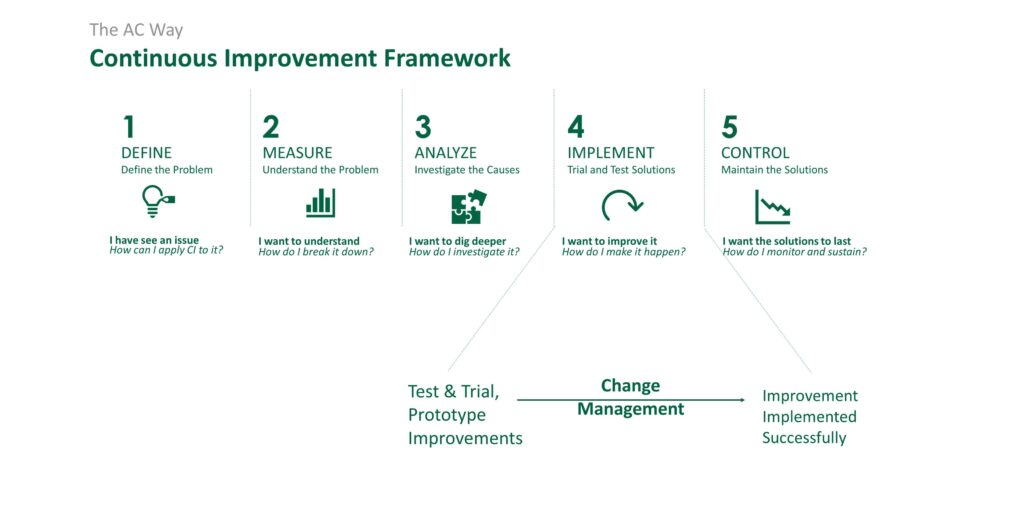Change Management
Planning for Change
Planning for change is a critical element to ensuring improvements are implemented successfully, will sustain the test of time and are standardized across the college. This is important in the “Improve” stage of the AC Way DMAIC Continuous Improvement Framework. We go from prototypes and pilot improvements towards a well managed roll out.

Benefits of Using Change Management Practices
- Documentation of changes
- Ensuring everyone is informed of the change – avoid surprises
- Increased chance of adoption of change, decreased resistance
- Addressing risks and blinds pots prior to rolling out the change
- Standardization and sharing across departments
A Mini-Guide to Change Management
- Develop, test, prototype an improvement idea – get ready for implementation
- Let your supervisor know about your intentions of sharing and making the change official
- Create a sharable document (1-page) outlining the proposed change
- What is the change?
- What is the benefit?
- List the stakeholders who may be affected by the change
- Share this change document with those identified on the stakeholder list – request feedback (questions/concerns) by a particular date
- Create a follow up meeting to ensure all stakeholders are aware of the change and have been engaged
- Document all the concerns brought up, and how they will be addressed, by who and when in your change document
- Address all the concerns outlined in the change document
- Resend out the change document – communicate with stakeholders that the concerns have been addressed
- Send change-document to the directors whose teams will be affected. Seek approval and capture it in the change-document
- Go ahead with your implementation plan
- Monitor the change closely
- Keep your communication channels open to address any unforeseen issues that occur
- Follow up with stakeholders at the 7 day, 30 day, 60 day and 90 day mark
- Reach out for final input from all of your stakeholders – to ensure no outstanding concern
- Consider the change implemented